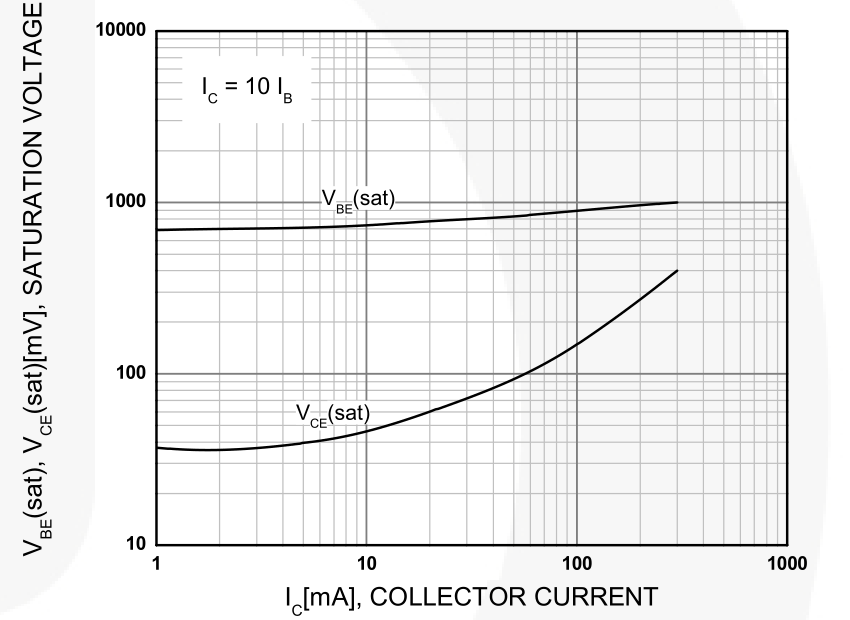In order to stay in the saturation, the voltage between collector and
emitter has to be exactly equal to Vce in the char above, is that
right?
In a bipolar transistor 'saturation' means that VCE is as low as it can get at that Collector current, effectively changing from a controlled current source to a resistor. In this region IC is no longer proportional to IB, ie. the transistor is 'saturated' with Base current and cannot turn on any harder.
But when the transistor is working at Vce and 0 < Ib < (Ic/beta),
meaning Ic is not at the maximum capability for the transistor. The
voltage drop between collector and emitter is a fixed value for the
transistor made of certain material (0.7V for silicon and 0.2V for
germanium). Is that right?
You seem to be a bit confused here. VBE is often considered to be a fixed value of 0.7 V for silicon. When not in saturation VCE slides up and down (along the red 'load line' in the graph) as IC varies, due to varying voltage drop across the load.
The load line in that graph is just an example for particular load resistance (in this case 100 Ω), and point 'A' is VCE(sat) for that load only. If the load resistance was higher the line would intercept the Y axis lower down, and VCE(sat) would be lower.
And, Rc, the resistor in serial with collector takes the remaining of
the voltage from power supply. E.g., 5V power supply Vce is 0.7V, as
long as the transistor is open. And, the voltage left for resistors in
serial with collector is 5V - 0.7V = 4.3V. Is that right?
Yes.
So, the value for Rc to limit the current Ic from its maximum, say 0.6A, would be 4.3V / 0.6A = 7.17 Ohm?
Yes, but only if VCE(sat) is 0.7 V at IC = 0.6 A. Depending on the transistor it could be higher or lower. In your graph VCE(sat) is ~0.7 V at 60 mA, so at 600 mA it would be much higher (~7 V, assuming linear extrapolation).
When using voltage divider(two resistors in series) to control the Ub,
voltage at base, making Ub higher than the 0.7V voltage drop required
for Ube to open the transistor, why could the Ub be higher than 0.7v?
I thought Ub would always stay at 0.7V for silicon... and 0.2V for germanium
The 0.7 V and 0.2 V are only approximations used for calculating bias resistors etc., the actual voltage increases as Base current increases.
Here is a graph of VBE(sat) (and VCE(sat)) vs IC for BC547-BC550:-

At a Base current of 100 μA (IC = 1 mA) VBE is indeed 0.7 V, but at higher Base current it increases (to ~1 V at 30 mA). In linear operation IB is usually less than 1 mA, so 0.7 V is close enough for most calculations.
Note that this transistor's absolute maximum DC Collector current rating is 100 mA, at which point VCE(sat) is typically ~150 mV. if running from a 5 V supply the minimum load resistor permitted to limit Collector current to 100 mA would be (5-0.15)/0.1 = 48.5 Ω. In practice a higher resistance would be chosen to reduce Collector current and improve reliability.



